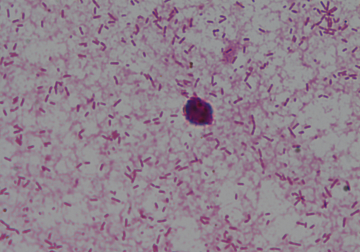In a new study from LVPEI, Drs. Taraprasad Das, Akash Belenje, Joveeta Joseph, and others evaluate inflammation score’s association with endophthalmitis severity, type of pathogen, antibiotic response, and visual outcome to underscore the importance of tackling inflammation in such instances.
All surgeries—interventions that penetrate the body—carry a small risk of infection. A dreaded complication of cataract surgery, the most common eye surgery in the world, is endophthalmitis, a vicious inflammation in the eye because of secondary infection. In endophthalmitis, pathogens infect the ocular cavity and release toxins, triggering an explosive host immune response. Together, the toxic effects of the pathogen and the eye’s inflammatory cascade damage several tissues in the eye. The clear ocular fluids begin to haze, and pus accumulates. Endophthalmitis can set in a week and result in blindness, without medical intervention.
In cases of endophthalmitis, it is unclear what causes the damage: the infection or the inflammation. However, treatment decisions that prioritize infection control alone may be inadequate. For one, these decisions are made based on presenting visual acuity and symptoms, as it takes a few days to identify the inciting pathogen. The standard of care for endophthalmitis includes intraocular antibiotics, vitrectomy (the surgical removal of infected vitreous fluid), and intraocular corticosteroids, depending on the magnitude of the infection. Previous studies by LVPEI have established and validated the use of an ‘inflammation score’ (IS) to quantify inflammation and severity. So, a treatment strategy that bases treatment using IS to reduce inflammation, a hallmark of endophthalmitis, should have a measurable impact on disease alleviation.
In a new prospective study published in the Indian Journal of Ophthalmology, Drs. Taraprasad Das, Akash Belenje, Joveeta Joseph, and others from LVPEI evaluated the inflammation score and its association with disease severity, type of pathogen, antibiotic response, and visual outcome. The team classified endophthalmitis into three categories based on total IS in the cornea, anterior chamber, iris, and vitreous of the eye: mild (IS<10), moderate (IS 10-19), and severe (IS>20). A total of 175 patients who underwent cataract surgery and developed endophthalmitis were selected for this study. Moderate endophthalmitis was seen in over half (53.7%) of the patients, while 27.4% (48 patients) had severe endophthalmitis. Severe endophthalmitis had a much shorter manifestation time, only 5.4 days on average, while mild-moderate endophthalmitis presented over an average of 8.3-8.7 days.
Most patients (79.4%), including the ones with severe endophthalmitis, were functionally blind, with vision limited to hand movements and light perception. Over half of the patients (55.5%), including 71% of those with IS>20, were infected with gram-negative bacteria (GNB), a class of pathogenic bacteria that are more likely to be antibiotic resistant. In fact, nearly half (47.6%) of the bacterial strains in this study were multi-drug resistant. Most GNB (88.6%) responded to colistin—the last line of antibiotic treatment available today. Patients with higher inflammation scores needed additional interventions, and those with an IS more than or equal to 20 more often required a vitrectomy. Similarly, those with a high IS were more likely to have poorer visual outcomes after intervention. In all, the study underscores the key role that tackling inflammation plays in managing endophthalmitis, along with infection control.
‘This Inflammation Scoring system could help predict the etiology of endophthalmitis along with prognostication and potentially be a useful tool in clinical management,’ remarked Dr. Taraprasad Das, Vice Chair Emeritus of LVPEI and the corresponding author of this paper.
Dr. Joveeta Joseph, Head of Microbiology at LVPEI adds, ‘This Inflammation Scoring system could help predict the etiology of endophthalmitis along with prognostication ahead of the microbiology lab report.’
Citation
Das T, Belenje A, Joseph J, et al. Evaluating the utility of inflammation score in post-cataract surgery endophthalmitis. Results from a prospective study in India. EMS Report #4. Indian J Ophthalmol. 2024;72(1):81-86
Photo credit: Gram Negative Bacilli; Suchitha Pandey, LVPEI



